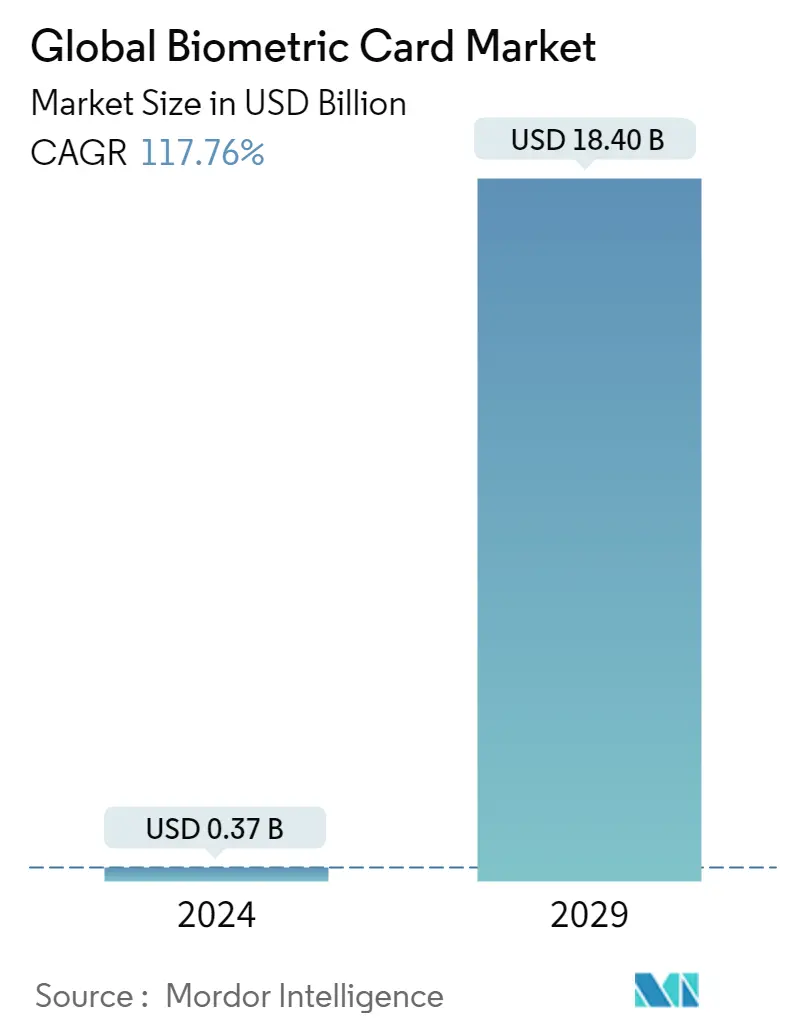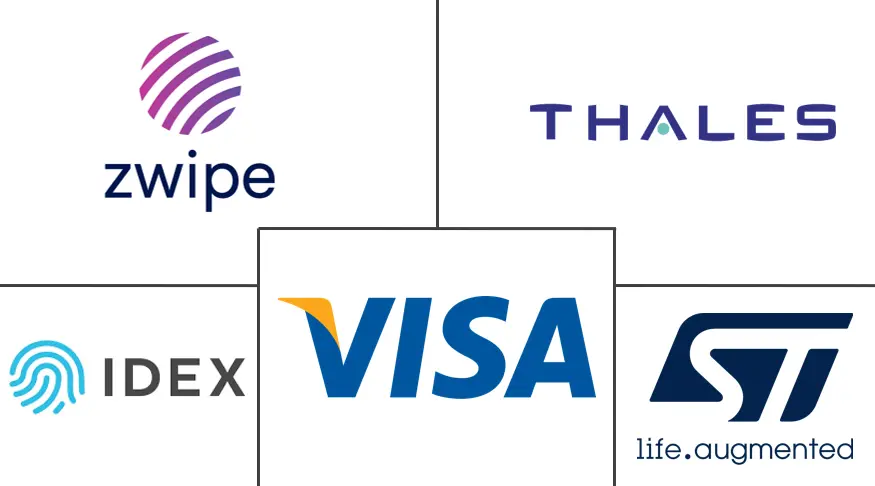Market Size of Global Biometric Card Industry

| Study Period | 2019 - 2029 |
| Market Size (2024) | USD 0.37 Billion |
| Market Size (2029) | USD 18.40 Billion |
| CAGR (2024 - 2029) | 117.76 % |
| Fastest Growing Market | Asia-Pacific |
| Largest Market | North America |
Major Players
*Disclaimer: Major Players sorted in no particular order |
Need a report that reflects how COVID-19 has impacted this market and its growth?
Biometric Card Market Analysis
The Global Biometric Card Market size is estimated at USD 0.37 billion in 2024, and is expected to reach USD 18.40 billion by 2029, growing at a CAGR of 117.76% during the forecast period (2024-2029).
Increasing demand for biometric authentication systems across various end-users, including banking, retail, gaming, and security, is expected to support the growth of the studied market during the forecast period.
- Biometric cards combine the embedded chip technology with biometric authentication technologies such as fingerprints, eye retina, iris scanning, facial patterns, voice recognition, etc., to verify the cardholder's identity for in-store purchases. Biometric cards also comprise smart cards with various security features, such as an optical strip or barcode, a holographic security image, and an embedded chip.
- Biometric cards are forms of identification that analyze and recognize individuals based on their physical and behavioral traits. These include fingerprints, eye retina, iris scanning, facial patterns, voice recognition, and body movement. Biometric cards also comprise smart cards with various security features, such as an optical strip or barcode, a holographic security image, and an embedded chip.
- A smart card is an identity card that uses biometric analysis to identify an individual. Smart cards are available in several forms, but the most common and popular are those with a processor with internal memory or those that function with a memory chip. The cards are connected via direct physical contact with a scanner or a remote electromagnetic interface. The cards can store large amounts of data, carry out their encryption and digital signatures, and connect this information to a remote, a contactless system like an electromagnetic card reader. By using this technology, biometric cards offer more security than conventional contactless payment methods. During the transaction processing, the card compares the user's fingerprint on the scanner with the reference data stored in the card's secure chip before authorizing the payment. No personal data is held on a bank's servers or sent to the centralized database. Hence, in case of theft, the customers will not have to worry about fraudulent activity on their accounts. It adds an extra layer of protection and ensures that the user's account details are kept secure. This added protection by the biometric cards does not have a payment threshold, allowing its consumers to make high or low-value transactions.
- Biometric ID cards apply to several solutions, especially for companies and individuals requiring greater security. Moreover, companies in highly competitive fields may choose biometric cards as an added security against illegal duplication and theft. Advanced ID cards serve government sectors, research institutions, and some universities and schools.
- The technology required for biometric authentication in cards involves a higher expense than the technology used in the payment cards that are being used currently. Although consumers may be willing to pay a small fee for a more secure payment card, the current cost of the biometric card, which is expected to be around USD 20 per card, restricts its adoption among users.
- The COVID-19 pandemic has been a catalyst when it comes to contactless payments. Following the pandemic, the tech sector has developed contactless solutions, indirectly resulting in higher transaction levels being processed without a second authentication factor. With no payment limits, biometric payment cards meet the need for all contactless transactions while addressing security concerns.
